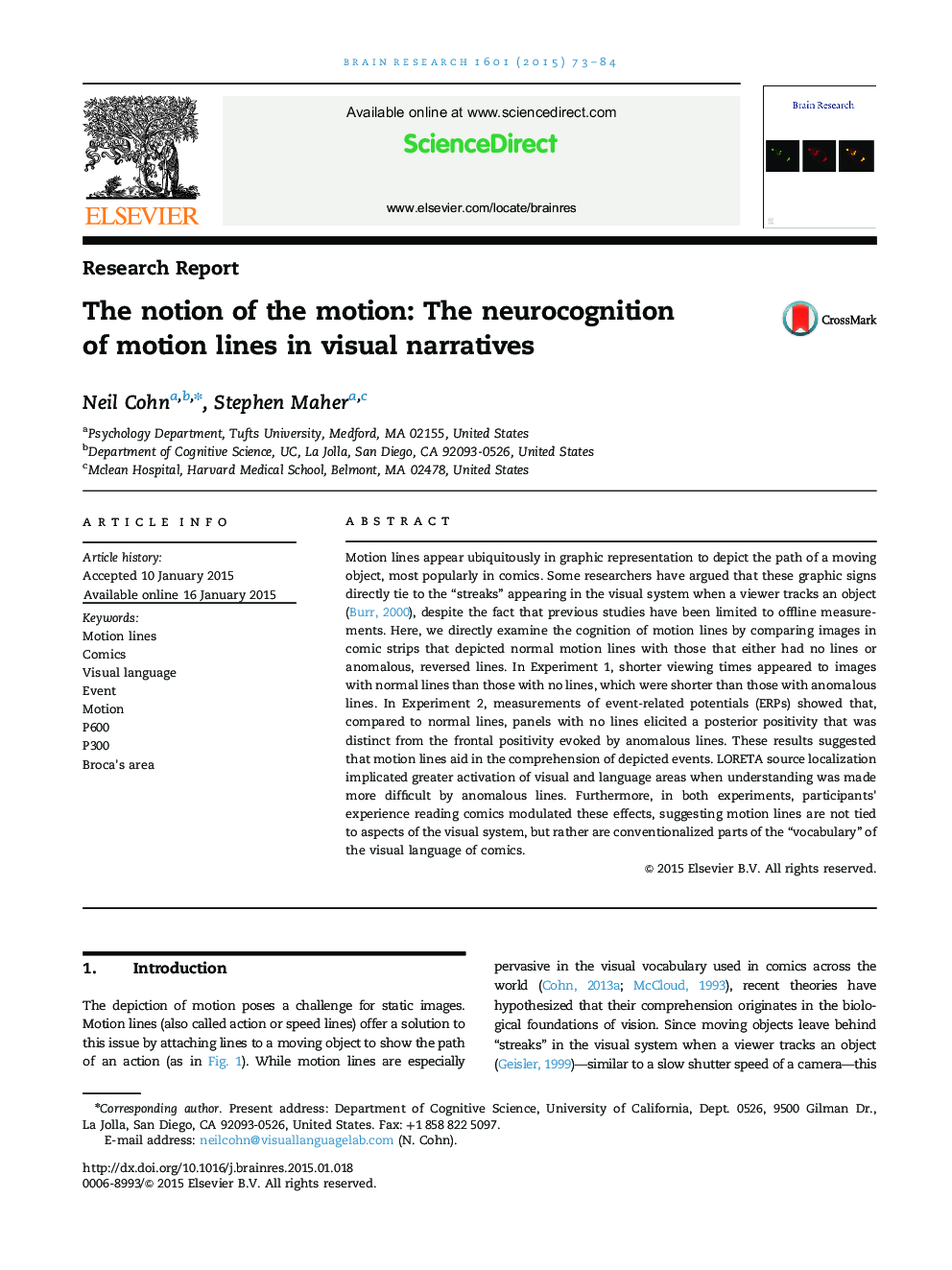| کد مقاله | کد نشریه | سال انتشار | مقاله انگلیسی | نسخه تمام متن |
|---|---|---|---|---|
| 6263156 | 1613838 | 2015 | 12 صفحه PDF | دانلود رایگان |
- We examined motion lines, which appear in comics to depict a path of a moving object.
- Longer viewing times appeared to anomalous lines and no lines than normal lines.
- Anterior positivities appear to the presence of anomalous lines.
- Posterior positivities appear to the absence of normal lines.
- Comic reading expertise modulates the amplitude of these brain responses.
Motion lines appear ubiquitously in graphic representation to depict the path of a moving object, most popularly in comics. Some researchers have argued that these graphic signs directly tie to the “streaks” appearing in the visual system when a viewer tracks an object (Burr, 2000), despite the fact that previous studies have been limited to offline measurements. Here, we directly examine the cognition of motion lines by comparing images in comic strips that depicted normal motion lines with those that either had no lines or anomalous, reversed lines. In Experiment 1, shorter viewing times appeared to images with normal lines than those with no lines, which were shorter than those with anomalous lines. In Experiment 2, measurements of event-related potentials (ERPs) showed that, compared to normal lines, panels with no lines elicited a posterior positivity that was distinct from the frontal positivity evoked by anomalous lines. These results suggested that motion lines aid in the comprehension of depicted events. LORETA source localization implicated greater activation of visual and language areas when understanding was made more difficult by anomalous lines. Furthermore, in both experiments, participants׳ experience reading comics modulated these effects, suggesting motion lines are not tied to aspects of the visual system, but rather are conventionalized parts of the “vocabulary” of the visual language of comics.
Journal: Brain Research - Volume 1601, 19 March 2015, Pages 73-84
